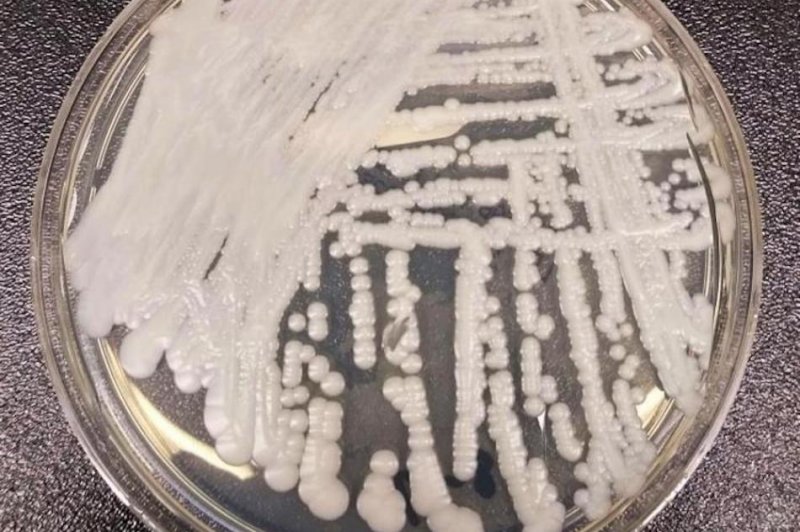A petri dish hosts Candida auris, a yeast fungus that can infect hospital patients with weakened immune systems. Photo by CDC
Jan. 12 (UPI) -- Scientists have discovered a novel drug compound capable of combating drug-resistant yeast strains.
Microscopic yeast are a menace in hospitals. The fungi can grow in the nooks and crannies of medical equipment and hospital surfaces and can cause infections in patients with weakened immune systems. For some, an infection can prove fatal.
Candida auris is one of the most problematic species, as it has developed resistance to multiple antifungal drugs.
Current antifungals attack yeast by puncturing the cell membranes or by blocking sterol production. The new drug works by blocking vital proteins from attaching to the yeast cell wall. In doing so, the antifungal compound disrupts the yeast's growth process and prevents the formation of drug-resistant fungal communities.
The compound targets an enzyme called Gwt1 that's found in the cells of many problematic yeast species.
Scientists at Case Western Reserve University School of Medicine tested the new drug compound and several other common antifungal drugs on 16 different strains of C. auris. The compound killed the yeast cells at concentrations "eight-fold lower than the next most active drug, anidulafungin, and more than 30-fold lower than all other compounds tested."
Scientists also used the drug to successfully treat mouse models infected with C. auris.
"To help the discovery of effective drugs it will be necessary to have an animal model that mimics this infection," Mahmoud A. Ghannoum, professor of dermatology at Case Western, said in a news release. "Our work helps this process in two ways: first we developed the needed animal model that mimics the infection caused by this devastating yeast, and second, we used the developed model to show the drug is effective in treating this infection."
Scientists infected mice with the yeast through the vein running through their tails, which mimicked the severity of a bloodstream infection experienced by very sick hospital patients. After two days of treatment, the mice showed a large decrease in their kidney, lung, and brain fungal burden.
The research, published this week in the journal Antimicrobial Agents and Chemotherapy, suggests the drug could soon be used to treat invasive infections in humans.
"Limited treatment options calls for the development of new drugs that are effective against this devastating infection," Ghannoum said. "We hope that we contributed in some way towards the development of new drugs."















